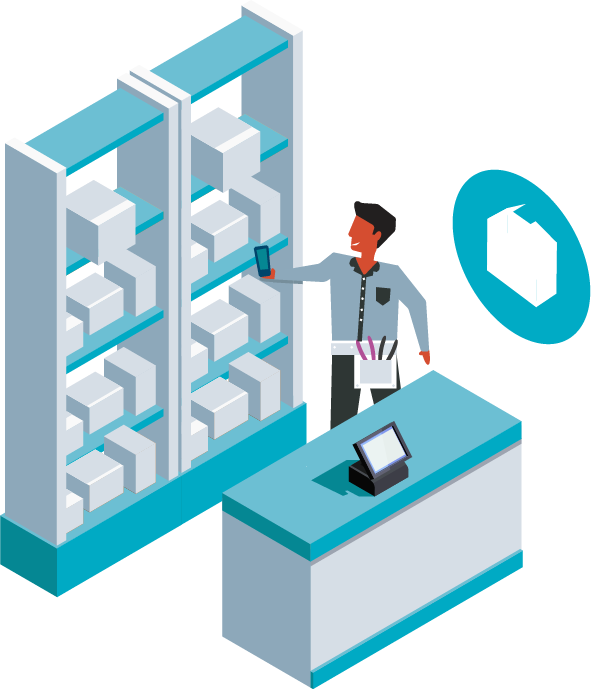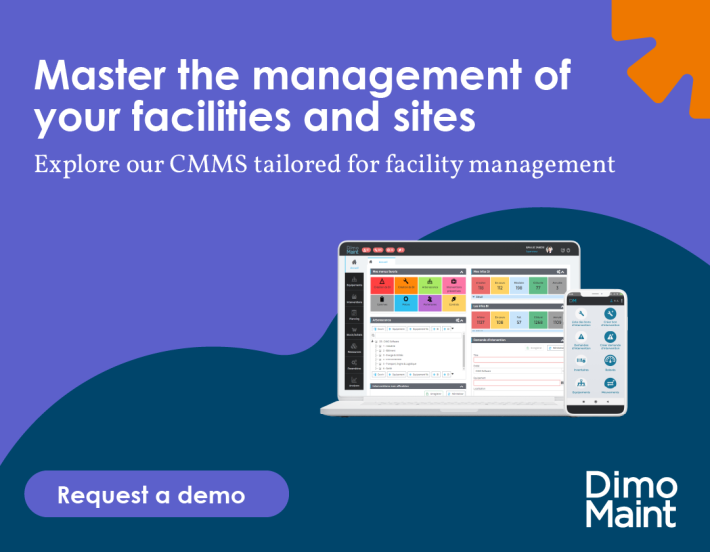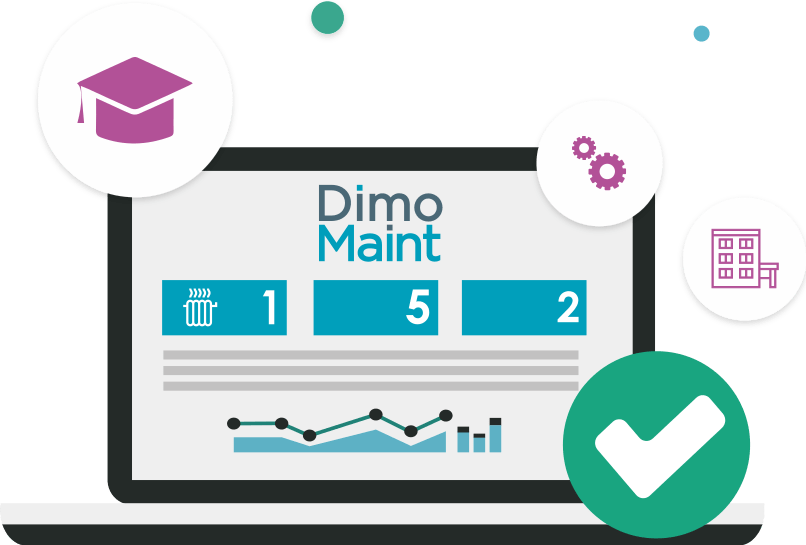Maintenance as a performance lever regardless of business type
From large retailers to small shops, businesses rely on a multitude of assets to conduct their activity. And these assets differ fundamentally based on the profile of each business: refrigeration equipment in food stores, display stands in clothing retail, sorting systems in hardware stores, diverse electrical installations… For most companies in the sector, managing maintenance must take into account this complexity and be error-free, lest the business operations come to a halt.
Commercial building maintenance must primarily address challenges of:
- Cost Reduction: controlling costs is one of the main sources of competitiveness for stores and businesses. Enlightened facility management means a better vision of the company’s cost sources and maintenance at the most opportune times.
- Safety of customers and employees: timely building maintenance ensures compliance with standards, and therefore the safety of its occupants. A significant concern for businesses, which are responsible for the safety of their customers.
- Providing uninterrupted service: every store or business must be highly responsive to guarantee the operation of its assets without breakdowns or unexpected issues. Emergency repairs and maintenance, as well as planned replacements, must be anticipated as much as possible to ensure continuous activity.
- Providing employees with good working conditions: the work environment for retail employees is all the more fulfilling when their tasks are of high added value. Maintenance too contributes to better working conditions: automating solvable problems improves the daily life of employees.
- Enhancing brand image: business operations without downtime or failure have almost immediate positive effects on customer satisfaction, and thus on the company’s image. Ensuring proper maintenance is therefore essential for building a reputation for reliability and quality.
Which types of maintenance should be prioritized for retail equipment and installations?
Retail equipments and installations vary as much as:
- Point of Sale Equipment: cash registers, payment terminals, printers, scanners, inventory management systems…
- Buildings: lighting, door mechanisms, floors, plumbing, heating and cooling…
- Sensitive Machinery and Equipment: preservation systems, sorting, cooling, cutting machines…
- Security Systems: locks and alarms, smoke detectors, fire detection, video surveillance…
- Material Handling Equipment: pallet trucks, conveyors, various dispensers…
Not all commercial equipment requires the same level of responsiveness during facility management. That’s why commercial building maintenance often encompasses several types of maintenance:
Corrective maintenance: this allows for correcting malfunctions and wear as they occur. Basic maintenance, but essential for businesses to address everyday mishaps on less critical installations.
Conditional maintenance: in sensitive environments such as food retail, maintenance takes into account variations in machine operations. Repair is triggered based on predefined parameters or detected anomalies, allowing intervention before equipment breaks down.
Preventive maintenance: crucial for anticipating breakdowns and acting at the source, preventive facility management consists of regular interventions that limit undetected failures.
Predictive maintenance: particularly recommended for refrigeration equipment, predictive maintenance involves continuously analyzing data from equipment to accurately predict future failures.
How does a CAFM serve rigorous maintenance for stores and shops?
What benefits can be expected from using a CAFM Software ?
The larger or more numerous the commercial premises, the more structured their maintenance needs to be. This is the primary goal of a CAFM. The Computer-Aided Facility Management system indeed fully adapts to the diverse profiles of retail businesses. It allows for:
- Better management of very diverse assets: from clothing to bookstores and food retail, a CAFM takes into account all types of assets and maintains them according to their specific needs
- Coordinating maintenance of different sites and orchestrating facility management from the company’s headquarters: with a CAFM, decision-makers have a consolidated overview of all maintenance operations, regardless of the location of the stores.
- Standardizing facility management processes further: while commercial building maintenance isn’t always followed up or documented, a CAFM centralizes all information to make future interventions more reliable.
- Taking a more strategic approach to maintenance: a CAFM allows businesses to plan their facility management operations further, thus adopting a proactive approach to maintenance. This approach not only helps reduce downtime and improve asset durability, but also allows the company to take a forward-thinking approach to building maintenance, turning it into an asset for customer experience.
While CMMS focuses specifically on managing and optimizing maintenance tasks, CAFM (Computer-Aided Facility Management) provides a broader view, integrating maintenance with other aspects like space management, real estate planning, and energy optimization.
By leveraging the right tools, such as CMMS or CAFM, businesses can better manage their assets, streamline maintenance, and ensure that facility management contributes to operational efficiency and customer satisfaction.
Case Studies: discover how CAFM facilitates maintenance management of retail outlets.
CAFM for managing maintenance of over 5000 retail outlets
Simply Solutions is an international provider of strategic facilities management and workplace maintenance services.
The company uses a CAFM to help its team manage reactive maintenance and planned preventive maintenance on client sites. Requests arrive at their customer service, which creates the tasks and forwards them to the maintenance team. This team can then view and manage tasks while on the move. The company also allows its clients to view tasks across their sites and create them directly. Read the full testimonial from Simply Solutions.
L’Incroyable streamlines the management of on-site interventions across its chain of stores with a CAFM
L’Incroyable, a chain of decoration and furnishing stores, was overwhelmed by its Excel files. Therefore, it chose to improve the comprehensive tracking of its maintenance and interventions by digitizing its activity with the CAFM from DimoMaint.
Read the full testimonial from L’Incroyable.
Features of a CAFM for maintaining installations and equipment.
To support retailers in their building maintenance, a facility management-dedicated CAFM provides key features such as:
Comprehensive asset inventory
A CAFM provides stores with a detailed inventory of their installations. This visibility not only optimizes facility management but also improves the traceability of past operations. Over time, commercial building maintenance becomes more efficient and service interruptions are reduced, resulting in an excellent customer experience.
Data centralization
The centralization of maintenance data via a CAFM is particularly useful for businesses and stores managing a large number of equipments. The ability to review the progress of facility management from a single interface is a true asset and a source of responsiveness.
Intervention history
Planning interventions and documenting them facilitates the establishment of more preventive than corrective facility management. The entire structure benefits from this traceability, especially when the business or store must comply with strict standards.
Reporting
Analyzing numerical data provides a solid foundation for better understanding the scope of maintenance, its economic stakes, and how to improve it. A CAFM offers comprehensive dashboards to study the general and particular state of assets and implement the right actions.
By simplifying communication between stakeholders and providing visibility into building maintenance, a CAFM thus eases the daily life of retailers and store managers. The system’s great strength: its ability to adapt to the retail sector in all its diversity. With a CAFM, gain speed and reliability, and identify new maintenance options for creating a seamlessly smooth customer experience.






